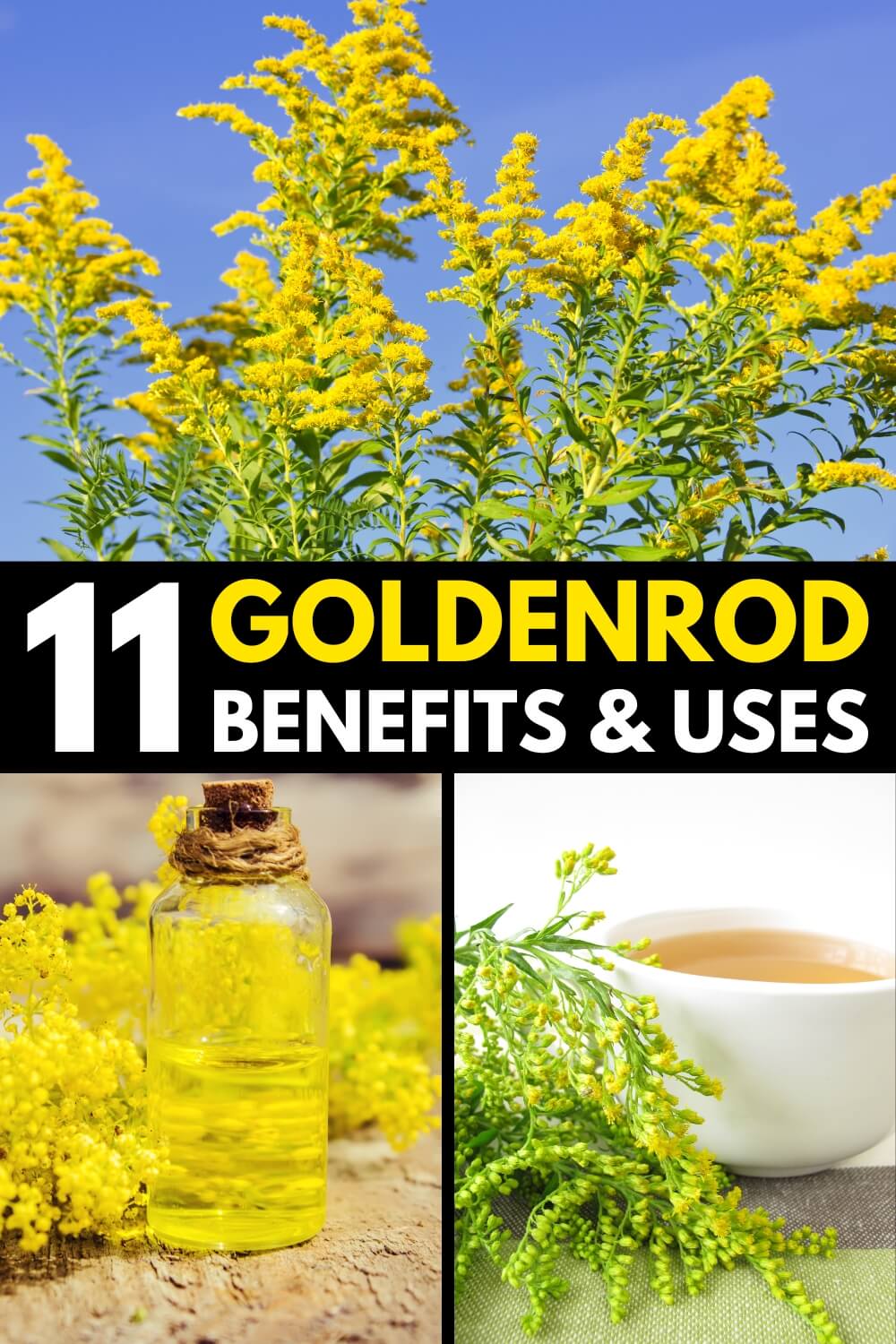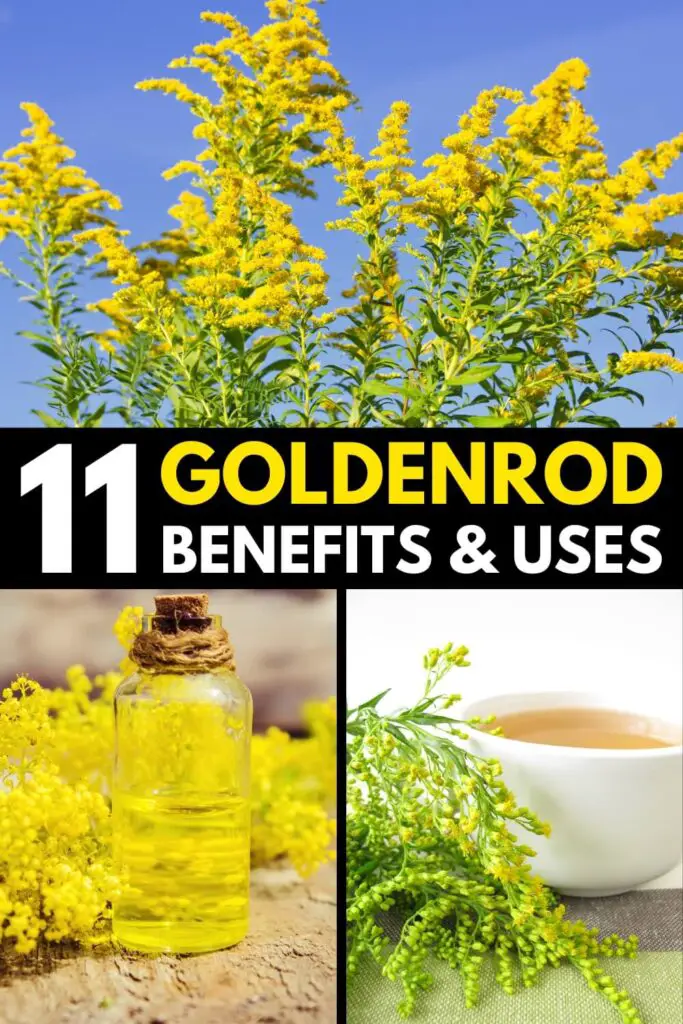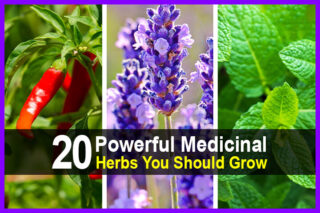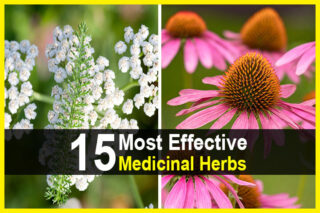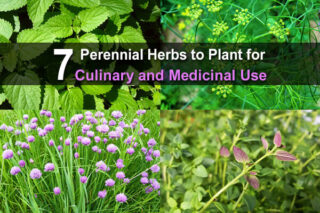Estimated reading time: 7 minutes
Although the jury is out on whether it is a weed of a wildflower, goldenrod has a rich history of providing many health benefits.
As a member of the Solidago genus and the Asteraceae family, goldenrod is an herbaceous perennial plant that grows in open areas such as meadows, prairies, fields, and along roadsides throughout much of North America. There are more than 75 goldenrod species, but they all produce bright golden flowers in late summer and early fall.
Although goldenrod is often confused with the allergy-causing ragweed, which has a similar bloom time, the two plants have noticeable differences. For example, ragweed is an annual plant with leaves that resemble fern fronds and alternate along the stem. Ragweed flowers are small and green-yellow in color.
In contrast, goldenrod is a perennial with narrow, elongated leaves that typically alternately grow along a smooth, green stem. Goldenrod's bright and showy flowers form dense clusters that often appear as plumes or spikes.
Another key difference is that lightweight ragweed pollen is spread by the wind, much to the distress of many folks who suffer from hay fever. On the other hand, goldenrod pollen is too sticky and heavy to be spread by the wind, and instead, the process relies on pollinators.
Ironically, while ragweed can cause some health issues, goldenrod is known for its medicinal qualities. Native Americans, who used the plant's bright color as a dye, often called goldenrod “sun medicine.”
This article will describe the health benefits of goldenrod and how you can harness them. We’ll also give some growing tips.
Want to save this post for later? Click Here to Pin It On Pinterest!
Goldenrod’s Benefits
Here are some of the medicinal benefits of goldenrod.
- Congestion and cough and cold relief – Goldenrod helps break up mucus in the lungs and soothe other symptoms of the common cold.
- Anti-inflammatory properties – When used as an oil, cream, or salve, goldenrod helps ease inflammation and pain associated with arthritis, knee or back injury, or over-exertion of the muscles.
- Urinary system health – Goldenrod can work as both an astringent and an antiseptic, making it useful in treating urinary tract infections. Drinking goldenrod tea can increase urine flow, which helps flush toxins from the body and helps prevent the formation of kidney stones.
- Allergy relief – Taking a goldenrod tincture can help dry up a runny nose and watery eyes associated with seasonal allergies.
- Skin healing – When used as a salve or poultice, goldenrod can help heal minor burns and other skin wounds. Some herbalists use it to help heal gum pain.
- Digestive aid – Goldenrod helps ease the inflammation caused by digestive upset and diarrhea. It also helps stimulate digestion and boost the absorption of nutrients.
Ways to Use Goldenrod
The most common ways to obtain the benefits of goldenrod are internally with teas and tinctures and externally with infused oil made into salves, soaps, and lotions.
Before we share a few recipes, here is an important note. Although it is not nearly as problematic as ragweed, goldenrod still can produce allergic reactions in some people. Begin with small doses to see how your body reacts. As with other medications, it's a good idea to consult your doctor before trying goldenrod, and its use is not recommended during pregnancy.
Also, most recipes require dried goldenrod flowers. Here's how. Spread flower heads out on a clean cloth or paper towel. Break up any large sections to form a single layer. Another option is to hang the flower clusters up to dry. Depending on humidity, the drying process can take several days up to a few weeks.
You can store dried flowers in a lidded mason jar for up to a year. Once their golden color fades, it's time for a new batch.
Goldenrod Tea Recipe
Ingredients:
- 1-2 tsp dried goldenrod leaves and flowers (or 1 TBS of fresh goldenrod)
- 1 cup of water
- Honey or lemon (optional, for taste)
Instructions:
- If you're using fresh goldenrod, rinse it thoroughly.
- Bring 1 cup of water to a boil.
- Place the goldenrod into a cup. Pour the hot water over the herbs.
- Let the goldenrod steep in the hot water for about 10 minutes.
- After steeping, strain the tea to remove the leaves and flowers.
- You can add honey or a squeeze of lemon to taste if desired.
Goldenrod Tincture Recipe
From southerexposure.com
Ingredients:
- Alcohol (at least 80 proof or 40%) or vegetable glycerin
- Glass jar with a lid
- Dried goldenrod
Directions:
- Roughly chop up blooms and place them in a glass jar.
- Then, completely cover the blooms with alcohol.
- Place the lid on the jar and let your tincture sit in a cool, dark place for at least four weeks. Shake the jar daily for the first two weeks.
- Strain out the blooms. (Tinctures usually are good for one year or more.)
Goldenrod Infused Oil Recipe
From ediblewildfoods.com
Ingredients:
- 1 cup dried goldenrod flowers
- 1-quart mason jar
- 3 3/4 cups olive oil (enough to fill half the jar)
Directions:
- Place flowers into the jar.
- Slowly pour enough olive oil to thoroughly cover the flowers. (Make sure you get all the air bubbles out by poking a skewer into the mixture several times.)
- Check after about an hour to ensure the flowers remain under the oil. Seal the jar.
- Place the jar in a location out of direct sunlight and let it sit for six to eight weeks. Shake the jar every other second day.
- Strain oil through a cheesecloth. Squeeze the cheesecloth to ensure you get as much oil as possible.
Goldenrod Salve Recipe
From Homesteadhow-to.com
Ingredients:
- 1 cup infused goldenrod oil
- 2 TBS beeswax pellets
- Tin containers
Directions:
- In a double boiler or a heatproof bowl placed over a pot of simmering water, melt the beeswax and goldenrod oil until it becomes fully liquid.
- Carefully pour the mixture into the tin containers while it is still warm and liquid.
- Allow the salve to cool for a few hours or overnight until it is solidified completely. Once it is solidified, you can then seal the tin containers.
How to Identify Goldenrod
We already mentioned how goldenrod and ragweed are often confused with each other. However, since many plants can look alike and some goldenrod lookalikes may be toxic, it's important to take care when foraging.
Here are some resources that can help:
- PlantNet– a free app
- Foraging goldenrod – photos and tips
- How to identify goldenrods – article and information on Picture This app
- Foraging for Beginners – book, app, and video guide by Lomasi Ahusaka
How to Grow Goldenrod
If you’d prefer to grow your own goldenrod at home, here are some tips.
- Plant goldenrod in the spring or fall in a sunny spot of your garden that has well-draining soil. (A shady location reduces blooms.)
- Water young plants weekly until they are well established. After maturity, goldenrod plants need watering only when rainfall is scarce.
- Most of the goldenrod species do not require fertilizer. In fact, over fertilization can inhibit flower production.
- Most goldenrod species do well in USDA cold hardiness zones 2 to 8.
- Pruning goldenrod plants and deadheading spent flowers can prolong blooming time and help plants become fuller.
- You can also propagate goldenrod plants from cuttings. Here’s how.
- There’s a reason many people refer to goldenrod as a weed. The plants can spread very vigorously in the garden. Therefore, you may prefer to grow goldenrod in containers. Use a pot that has a minimum of a 12-inch diameter and large drainage holes. An unglazed clay container is a good choice.
Here is more information on growing goldenrod in your home garden.
Like this post? Don't Forget to Pin It On Pinterest!
You May Also Like:

